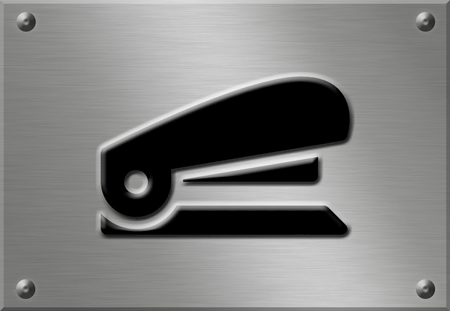
The History of The Stapler
 As long as there has been paper, there have been solutions for holding multiple sheets of paper together.
As long as there has been paper, there have been solutions for holding multiple sheets of paper together.
Before the humble staple was invented, papers were gathered by sewing, gluing, clamping and skewering. Around 1200 C.E., while attaching their handwritten pages together using ribbon and wax, a group of medieval academics became the first to bind them at the upper-left corner, as we still do today.
For the next 600 years or so, new ways to join papers together came and went. The two lasting characteristics were the aforementioned upper-left hand corner binding location, and the increasing use of metal attachment devices that became smaller, lighter and easily manufactured.
Jump ahead to the 1800s, when the American “paper fastener” was patented in 1866 by the Novelty Manufacturing Company. This was really the precursor to the modern stapler, through one major difference was that it held only one staple at a time.
The Novelty Manufacturing Company’s fastener was activated by pressing down hard on a large plunger, which would puncture the paper with the staple but would not clinch (or fasten) it in place. That had to be done manually, which could be a laborious process. In 1879, “McGill’s Patent Single Stroke Staple Press” was developed. It was a machine that both inserted and clinched a single metal staple. While it made the process easier, it still required constant reloading, and was not as popular as the manufacturer hoped it would be.
The Modern Stapler
In 1895, the E.H. Hotchkiss Company of Norwalk, Connecticut, began selling the “No. 1 Paper Fastener”, which used a long strip of wired-together staples. The No 1 Paper Fastener became so popular that it became simply known as “the Hotchkiss.”
 The main drawback of the Hotchkiss was that it required a heavy stroke on the machine’s plunger to separate the staples from their strip and drive them into your stack of paper. In fact, Hotchkiss-users often kept small mallets at the ready to assist in the process. While the Hotchkiss resembled the staplers that we know today, it had additional improvements ahead of it.
The main drawback of the Hotchkiss was that it required a heavy stroke on the machine’s plunger to separate the staples from their strip and drive them into your stack of paper. In fact, Hotchkiss-users often kept small mallets at the ready to assist in the process. While the Hotchkiss resembled the staplers that we know today, it had additional improvements ahead of it.
In the 1930s, stationery wholesaler Jack Linksy founded the Parrot Speed Fastener Corporation, later to be known as Swingline, in the 1930s. Swingline, of course, finally did get it right and gave the world the stapler still recognized the world over. In 1937, Linsky and his company produced the Swingline Speed Stapler No. 3.
Before the No. 3 came out, loading staples into any paper fastener could be a bit of challenge. Linsky and his engineers devised a patented unit that allowed staples to simply be dropped into the device before it was closed up for use.
Since that time, staplers have changed very little. They may have become motorized, and are now included in multifunction printers, but they essentially operate the same way as the No. 3 did back in1937.
Return to the Tech Trends Newsletter
